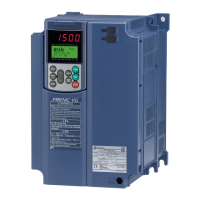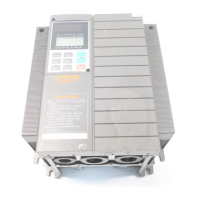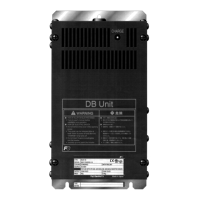When the output current of the inverter exceeds the level specified by the current limiter (F44), the inverter
automatically manages its output frequency to prevent a stall and limits the output current. According to limit value
based on Inverter’s rated current, the default setting of the current limiter is 160% for HHD/HD mode, and 130% for
HND/ND mode, respectively (Initial value is automatically written when selecting ND/HD/HND/HHD by function
code F80) If overload current, higher than the current limiter level, flows instantaneously so that the output
frequency decrease due to the current limiter causes a problem, consider to increase the current limiter level.
The current limiter mode should be also selected with F43. If F43 = 1, the current limiter is enabled only during
constant speed operation. If F43 = 2, it is enabled during both of acceleration and constant speed operation.
Choose F43 = 1 if you need to run the inverter at full capability during acceleration and to limit the output current
during constant speed operation.
■ Mode selection (F43)
F43 selects the motor running state in which the current limiter becomes active.
F43 data
Running states that enable the current limiter
During acceleration During constant speed During deceleration
0 Disabled Disabled Disabled
1 Disabled Action Disabled
2 Action Action Disabled
■ Level (F44)
F44 specifies the operation level at which the output current limiter becomes activated, as a ratio of the inverter
rating.
• Data setting range: 20 to 200 (%) of rated current of the inverter
(Inverter’s rated current changes according to the setting value of function code F80.)
■ Instantaneous overcurrent limiting (Mode selection) (H12)
H12 specifies whether the inverter invokes the current limit processing or enters the overcurrent trip when its
output current exceeds the instantaneous overcurrent limiting level. Under the current limit processing, the inverter
immediately turns OFF its output gate to suppress the further current increase and continues to control the output
frequency.
H12 data Function
0 Disable (An overcurrent trip occurs at the instantaneous overcurrent limiting level.)
1 Enable (An instantaneous overcurrent limiting operation is activated)
If any problem could occur when the motor torque temporarily drops during current limiting processing, it is
necessary to cause an overcurrent trip (H12 = 0) and actuate a mechanical brake at the same time.

